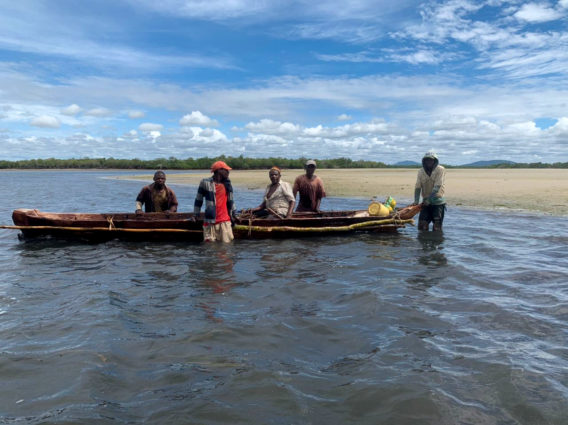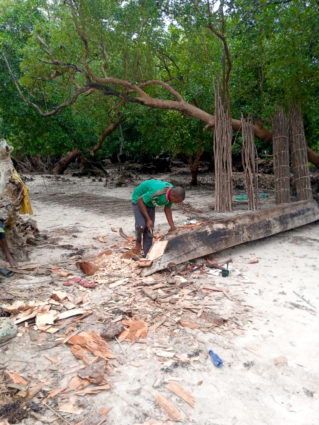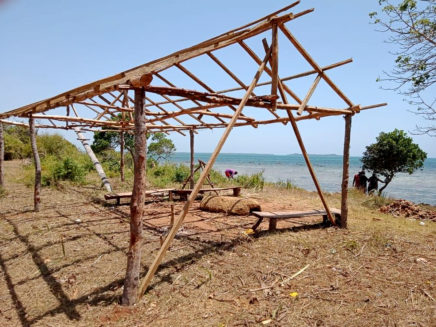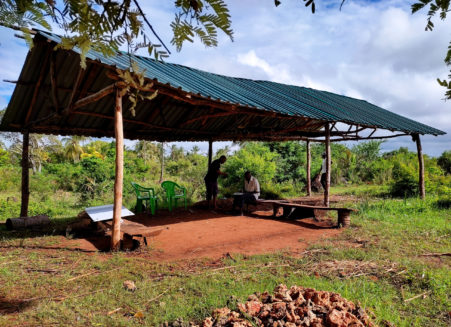By Yvonne Muyia, COMRED
A year after Kenya’s first COVID-19 case was confirmed, infections continue to rise. We are currently experiencing our third wave of the virus, and the highest number of infections so far. An economic crisis, brought on in part by the stringent measures set by the government, has been one of the most significant ripple effects here in Kenya. Consequently, there has been a shift in the country’s demographics, with people migrating from urban to rural areas to avoid the high cost of living in big towns and cities.
Population growth in rural areas also led to an increased dependency on natural resources for livelihoods and food security. The fisheries sector was not spared, as lockdown measures had impacted the markets and people’s purchasing power.After the first lockdown was lifted in September 2020, everything seemed to be getting back to normal. However, the lasting damage meant that many sectors of the economy were hit hard and a lot of people lost their jobs. Population growth in rural areas also led to an increased dependency on natural resources for livelihoods and food security. The fisheries sector was not spared, as lockdown measures had impacted the markets and people’s purchasing power.
I was lucky to be able to work from home and would regularly pick up the phone to speak with community members in Kwale County that I work with through my role at COMRED – a Blue Ventures partner in Kenya. It was during these conversations that I got a better understanding of how the pandemic has affected community life.
Tourism is a major source of income in Kwale County and many people’s livelihoods are dependent on it; some community members are tour operators and were forced to turn to fishing to earn a living. This single example paints a picture of how coastal livelihoods have shifted in Kenya since COVID-19 reached the country.
Everyone is fishing now and the daily catch has gone down. You can spend the whole day out fishing and come back with only two kilograms worth of catch.” – Said Choyo, Mwandamu Beach Management Unit (BMU)
I was excited to return as I really enjoy working with the communities and couldn’t wait to find out what they had been up to.
After seven months of working from home, in August 2020 we could finally go back to working in the COMRED office and continue some of our in-person project activities with communities. It was the longest time in two years that I had gone without visiting the Shimoni-Vanga seascape in Kwale County, where many people rely on fisheries for their livelihoods. I was excited to return as I really enjoy working with the communities and couldn’t wait to find out what they had been up to.
At the time, we were finalising the first phase of our project partnership with Blue Ventures, which aims to improve community participation in fisheries management and governance within BMUs on the south coast of Kenya. We were also preparing to start the second phase, which focuses on enabling BMUs to build their capacity to sustainably manage their fisheries. Excitingly, we’d also recently started working with five more BMUs from the Shimoni-Vanga seascape, bringing the total number of BMUs supported to eight. BMUs are community-level fisheries management units, co-managing with the government.
Our return to work coincided with the conclusion of the BMU elections and gave us a chance to help the newly elected leaders transition into office. This involved assisting the new leaders to plan their Annual General Meetings (AGMs), which update members on past and planned BMU activities. The 2020 AGMs had been postponed due to COVID-19; during the rescheduled meetings we were able to gain an understanding of how the communities have adapted to the pandemic.

Abdalla Usi, Kibuyuni BMU Chair, presenting the 2021 work plan to BMU members | Photo: Yvonne Muyia | COMRED
Managing the BMUs over the last year has been challenging. One particular hurdle was communication; normally, annual reports are presented to BMU members during in-person meetings by group leaders. The reports, which hadn’t been presented for over a year due to restrictions on social gatherings, include information such as financial reports, fisheries statistics, registry updates and the work plan for the following year which requires the members’ approval.
Visual representation has proved to be a more efficient way of sharing information with the members, who have varying literacy abilities.We supported the BMU leaders to visually present the information through graphs, tables, and creative texts instead of just reading them out. The resources would later be displayed at the BMU offices where all members could access them easily. Visual representation has proved to be a more efficient way of sharing information with the members, who have varying literacy abilities. So far, this new way of communicating the annual reports has been received positively and we’ve seen increased participation, which also highlights the need for more transparency within the BMUs.
A further need that has been revealed by the pandemic is the need to grow the financial capability of the BMUs so that they can provide financial support, such as loans, to their members – currently, BMUs do not provide such support. Consequently, the fishers feel less obligated to contribute as they see no need in supporting an institution that does not support them when they need it most.
Being in leadership during the pandemic has been a challenge, times have been tough for everyone. BMU members turn to the BMU for financial assistance but we cannot help them as that’s not a mandate of the BMU. We need to come up with a way to help fishers in such times.” – Abdalla Usi, Kibuyuni BMU
In the long term, BMU leaders like Abdalla Usi are considering reviewing by-laws and drafting new policies so that they can offer loans. In the short term, the pandemic has provided an opportunity to think of other ways to assist financially. With support from COMRED and Blue Ventures, the BMUs in Shimoni-Vanga are currently looking into establishing an eco-credit scheme. This is a fund that aims to provide financial support to community members for using sustainable fishing practices. Eco-credits could be the silver lining to relieve some economic stress, whilst also encouraging sustainability and conservation in the region.
Despite the challenges, some groups have managed to keep things afloat. The Kibuyuni BMU was able to conduct patrols on its Community Conservation Area (CCA) with support from the Kenya Coast Guard and the Kenya Fisheries Service. BMU members reported that the regular patrolling has led to a decrease in illegal fishing activities in the area.
At the Mwandamu BMU, after years of not having an office at their landing site, members began building their office in January 2021. Despite still being a work in progress, their collective effort demonstrates the power of togetherness and stewardship by the community.
In March 2021, the third COVID-19 wave hit. This has led to yet another lockdown in inland Kenya, and it seems that as a country, we’ll need more time before things get back to normal. Thankfully, the coastal region where we work hasn’t been heavily affected. So for now, we can continue to be physically present to support the BMUs in Shimoni-Vanga. As we continue to navigate the ongoing impacts of the pandemic, our progress will resonate with the words “tunasonga kama ngalawa” – a Swahili phrase that loosely translates as “moving with ease like a sailing canoe”, slow but steady.
Read Yvonne’s previous blog about COMRED’s partnership with Blue Ventures in the Shimoni-Vanga seascape
Learn more about COMRED
Find out how we’re helping East Africa’s marine conservation leaders to strengthen the capacity of their community-based organisations





